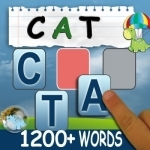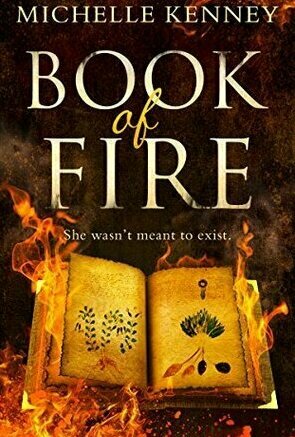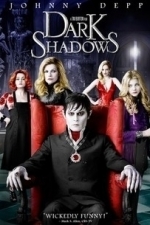Sophia (Bookwyrming Thoughts) (530 KP) rated Hidden Gold: A True Story of the Holocaust in Books
Jan 23, 2020
I'm generally not a memoir person. But if I'm going to read a memoir (or even nonfiction), I'll choose anything about the Holocaust (I find that time period sadistically interesting).
<i>Hidden Gold</i> deserves about as much praise as Anne Frank's <i>Diary of a Young Girl</i>. A story set in another part of Europe (Poland) during Hitler's reign, Burakowski tells us her family's survival, hidden away from society in the hopes that they won't be found out.
For two years, the Golds hid with the Lanskis in a small part of a barn in Kolkow, surviving with very little sustenance. During that time, their hope dwindles little by little, but the two families still cling on to their pasts, even if that life will be impossible to get back to after everything blows over.
I loved how Burakowski introduces us to her family and the people that the Golds were involved with, giving us lots of background information on how Leib met Hanna and how the Golds lived their life in the early parts of the war. Burakowski also gives us insight on the growing hypocrisy and horrors among society as Hitler's power and anti-Semitism grew, giving us visuals on how life was like for the Jews back in the late 1930s and early 1940s. We're also shown the inner turmoils going on with those who had good relations with Jews and now having to choose whether or not they should help Jews, or give in to the propaganda.
Shoshana, Hanna's daughter, is extremely admirable. She's willing to go out to the Germans, pretending to be one of them, to buy her family time. She is also willing to risk her life a few times to get her family's money from Pi?czów, and going back again <em>while</em> she felt ill. If I were in her place, I'd probably continue to curl up in a fetal little ball. (Despite the fact I'm considered living in "poverty," I'm pretty much a lucky duckling. Also, being an only child, I'm probably a <em>little</em> spoiled.)
David is perhaps one of those where all the feels will come. Like any little kid, he's full of mischief and mayhem, but going through such a dark time at a really young age, he's extremely brave, confident, and has the most hope for the family getting out alive.
Although most of <i>Hidden Gold</i> is focused on the Gold's survival during Hitler running rampant with the final solution, Burakowski finalizes the story from David's viewpoint with how each of the family members were impacted years later in the future. For those interested in what happened in other parts of Europe or a survival story outside of concentration camps, Ella Burakowski's <i>Hidden Gold</i> makes a fantastic contribution depicting the horrors of the Holocaust.
<a href="https://bookwyrmingthoughts.com/arc-review-hidden-gold-by-ella-burakowski/"; target="_blank">This review was originally posted on Bookwyrming Thoughts</a>
Night Reader Reviews (683 KP) rated Nutritional Herbs for Optimal Health in Books
Feb 4, 2020
Herbs have been used for centuries for their medicinal and nutritional properties. In fact they were the first form of medicine we had long before our current manufactured medicine became a thing. This book details the way some herbs used to be used before modern medicine took over and how they may still be used today. It also covers some of the illnesses people of today face and the deficiencies that cause them. It explains why and how specific herbs can help with some of these illnesses.
While the book has a large focus on Nettles (yes that stinging plant that many outdoors families were taught to avoid, at least where I live) for arthritis and kelp for the heart and thyroid other useful plants were mentioned. Comfrey will be a herb that many readers will want to keep on hand after learning about how it can speed up healing wounds significantly. Those prone to nausea will learn to keep Dandelion on hand and some Yaroow for toothaches and those hemorrhoids no one ever want to talk about. Don’t know how to properly use, prepare, or administer these herbs? Don’t worry all that is covered as well.
I really enjoyed how the author went into the historic uses of some of the herbs mentioned. It was especially interesting to learn how Stinging Nettle would directly be hit on the skin of a person suffering from Arthritis to increase circulation in order to reduce pain. I was disapointed that there was not a larger range of herbs mentioned. The book only talks about around twenty-three herbs total and some of those only got one short paragraph. Alos out of those few herbs mentioned only and a handful have pictures with them. Finally, my last complaint is that it talks about specific mineral or element deficiencies that can be treated with herbs more than the herbs themselves.
To be completely honest the only people who are going to really enjoy this book are health-conscious adults. This is largely because of the informative topic and the fact that this book is more of a handbook or guide. I rate this book 2 out of 4. While I did enjoy the information in this book it felt like there wasn’t that much offered. The lack of images and diversity of the herbs mentioned was a real let-down from me. Between that and the author frequently referring to or mentioning other books she wrote this book felt more like a teaser or sample and not the full thing.
https://nightreaderreviews.blogspot.com
https://facebook.com/nightreaderreviews
Hazel (1853 KP) rated Book of Fire in Books
Mar 7, 2020
Combining dystopia and ancient history, Michelle Kenney's debut series Book of Fire slots nicely into the list of best young adult science-fiction. Set in the not so distant future, the world has been destroyed and human life can only be sustained within a specially designed lifedome - at least that is what everyone living inside has been told. The protagonist, Talia, begs to differ, having lived in secret on the outside all her life.
A rogue test missile exploded with cataclysmic effect on 3rd November 2025, leaving cities in ruins. Whilst most people ran to the lifedome, Talia's grandfather and a few others ran in the opposite direction. For years, they have lived in the relative safety of Arafel, whose existence has been kept hidden from the majority of the people living in the dome.
Unfortunately, the leader of the lifedome is one of the few who knows of their existence and wishes to eradicate them and Talia's peaceful life is suddenly destroyed when her grandfather and her twin brother Eli are captured by soldiers. Determined to rescue them, Talia and her friend Max break into the dome but what they discover makes them even more concerned about the life of not just their families but all the remaining humans.
Obsessed with Ancient Rome, the lifedome's leader Octavia has created a replica of the historical city, going as far as to genetically produce strong and powerful gladiators. Yet, the more Talia sees of the lifedome - Pantheon - the more she realises it is not just extra-strong humans that Octavia has been experimenting with. Hidden in the depth of the dome are mythological creatures made from a mix of human and animal parts; creatures that should not exist, however, they all have various defects.
Talia soon learns that her grandfather was kidnapped for a reason: he knows the secret to create the perfect DNA for these creatures and, in turn, Talia unwittingly knows it too.
Initially, all Talia wanted was her grandfather and brother back but now she is part of something much bigger and must choose between her family, self-preservation and the rest of the human race. On top of that, she begins to fall for a pseudo-Roman Gladiator. Could it get any more complicated?
Michelle Kenney has created a world where the monsters turn out to be the heroes and the humans in charge, the monsters. Reading this at the time of the coronavirus makes the apocalyptic situation a little too close for comfort but it provides a strong message not to mess with things that no longer exist. Imperfection is a common by-product of life's recover - if only Octavia could have accepted that.
Book of Fire is the first in a promising trilogy that will transport you into a world of fantasy, danger, wonderful creatures and a hint of reality. For those who love ancient history and dystopian fiction will thoroughly enjoy this series.
Gareth von Kallenbach (980 KP) rated Dark Shadows (2012) in Movies
Aug 7, 2019
Frequent collaborator, Johnny Depp, stars as Barnabas Collins in a role previously made famous by Jonathan Frid. Barnabas Collins and his parents leave Liverpool in 1760 for New Hampshire, in an attempt to expand their family business. They succeed and become the wealthiest family in the area, resulting in the town getting named after the family. Barnabas was a ladies’ man and scorned the heart of Angelique Bouchard (Eva Green) by falling in love with Josette DuPres (Bella Heathcote). Unbeknownst to him, Angelique is a witch and out of pure jealousy, she kills his one true love and has cursed Barnabas to be a vampire so that his suffering would be endless. Angelique rallies the townspeople to bury Barnabas alive.
After nearly 200 years, Barnabas is accidently unearthed in the year 1972. He heads to the one place that he can call home and encounters the remaining four dysfunctional members of his family and discovers that his family estate is in jeopardy. Barnabas soon learns that the evil person behind all his families turmoil is none other than Angelique herself.
Though this film does have the quirky Burton-esque feel that we are all familiar with, it lacks his signature energy. The plot itself is long and drawn out and makes the first half of the movie extremely slow and boring. Now don’t get me wrong, Depp did manage to slip in more than a few funny lines but even his best work was a strained attempt at humor. I do, on the other hand, appreciate that Burton brought back the original vampire myths, with all the burning in the sunlight and not being able to see a reflection. Though the script and story itself leaves much to be desired, Johnny Depp is as funny as the story and/or script allows him to be and as Barnabas, he carries the movie. Even Michelle Pfeiffer and Helena Bonham Carter couldn’t help save this movie from the pedantic pace of a very uneven but predictable story. Equally disappointing was the waste of the perfect casting of Chloe Moretz as Michelle’s daughter. Even though she looked and sounded a lot like her movie mom, she wasn’t given much to do but sulk and glare.
Even though you will experience an entertaining blast from the past with the characters, soundtrack and fashions, it is best to say that this film should be left as a rental. Being such a huge fan of Burton’s kooky and imaginative world, it sure pains me to say that this movie is a bit of a train wreck and lacks the enchanting storytelling that we’ve come to expect from him.

Afrikaans Color Flashcards (with audio)
Education
App
* * * 50% off, limited time offer. Only 99c * * * Afrikaans Color Flashcards is a fun app for...

Smarty Shortz 1st Grade
Education and Games
App
Finally, an awesome, interactive, learning tool designed for your grade school Smarty! This...

Daniel Tiger's Stop & Go Potty
Education and Entertainment
App
**Parents' Choice Silver Honor** **Tech for Kids - Best Pick App** **Children's Technology Review -...

Build A Word Easy Spelling Long&Short Vowels,Sight
Education and Games
App
* "It is clear this app was created by those that understand learning and for those of an...

Advanced Naming Therapy Lite - Aphasia & Cognition
Medical and Education
App
Take your speech therapy to the next level! Practice word-finding skills for adults with aphasia...

Tiếp thị & Gia đình Magazine
News and Magazines & Newspapers
App
Tin nóng: Ứng dụng iPad và iPhone của Tiếp Thị & Gia Đình, tuần san có số...



